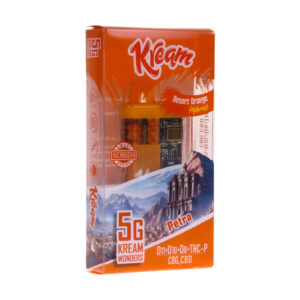Experience Vaping Flexibility with Kream Disposable: Your Trusted Selection for Portable Pleasure
Experience Vaping Flexibility with Kream Disposable: Your Trusted Selection for Portable Pleasure
Blog Article
Exploring the Ecological Impact of Non Reusable Vape Pens: What You Need to Know
In the world of disposable vape pens, a better examination of their ecological influence exposes a complex internet of interconnected factors that require our attention. From the manufacturing procedures and materials utilized to their eventual disposal and influence on air top quality, the implications of these apparently convenient gadgets expand far past their prompt use. Recognizing the full scope of their ecological impact is important for making educated decisions regarding our consumption habits and the prospective choices available.
Production Procedures and Products
Disposable vape pens are generally manufactured using a variety of materials and processes that can have significant ecological effects. The major parts of non reusable vape pens consist of a battery, heating component, e-liquid storage tank, and a mouthpiece.
Furthermore, the manufacturing procedures associated with generating non reusable vape pens can even more intensify their environmental impact. Using plastics, metals, and chemicals in the production process causes greenhouse gas exhausts, energy consumption, and waste generation. Additionally, the transport of raw products and completed products includes in the general carbon footprint of disposable vape pens. Taking into consideration these aspects, it is necessary for customers and makers to be mindful of the ecological repercussions associated with the manufacturing and use disposable vape pens.
Power Usage in Manufacturing
During the production process of non reusable vape pens, the power usage involved plays a considerable function in establishing their general environmental effect. The production of disposable vape pens calls for energy for various phases, consisting of extraction and handling of raw materials, producing parts like batteries and burner, setting up, packaging, and transportation. The removal and processing of products such as steels, chemicals, and plastics require substantial energy inputs, adding to the total carbon impact of the product. Additionally, the manufacturing procedures involved in creating the elaborate elements of vape pens, such as batteries and digital wiring, count heavily on energy-intensive procedures.
To deal with the ecological ramifications of energy consumption in production, manufacturers can embrace extra lasting methods. This can include utilizing renewable resource resources for producing operations, enhancing production procedures to decrease energy waste, and executing energy-efficient modern technologies. By focusing on energy efficiency and sustainability in manufacturing, the ecological effect of disposable vape pens can be reduced, adding to a greener and even more accountable vaping industry.
Disposal and Waste Management

Disposable vape pens have elements such as batteries, digital circuits, and plastic cases that can be hazardous otherwise gotten rid of correctly (kream disposable). The lithium-ion batteries in vape pens, as an example, position a significant danger if they wind up in garbage dumps, as they can leak harmful substances right into the dirt and supply of water
To resolve this problem, customers ought to be enlightened on the proper disposal approaches for vape pens. Recycling programs particularly designed for electronic waste needs to be promoted to encourage customers to reuse their disposable vape pens properly. In addition, manufacturers must take into consideration executing take-back programs to promote the safe disposal and recycling of these gadgets. By boosting disposal techniques and waste management methods, the ecological influence of disposable vape pens can be substantially lowered.
Effect On Air Quality
The existence of disposable vape pens adds to the destruction of air high quality in urban settings where their use is prevalent. When people utilize disposable vape pens, they launch damaging compounds into the air.
In addition, the disposal of vape pen batteries, which typically include hefty metals like lithium, nickel, and cobalt, can bring about air pollution otherwise managed effectively. Inappropriate disposal methods, such as incineration or landfilling, can launch these toxic metals right into the air, adding to air contamination and possibly causing injury to human health.
To alleviate the impact of disposable official website vape pens on air quality, advertising understanding about correct disposal methods, urging reusing programs for vape pens and batteries, and educating individuals about the ecological repercussions of these devices are important action in minimizing their ecological impact.
Alternatives and Sustainable Choices
Taking into account the environmental impact posed by disposable vape pens, discovering choices and sustainable options is important for reducing environmental harm. One sustainable option is to switch to refillable vape pens that permit individuals to reenergize the device with e-liquid, substantially minimizing the quantity of waste generated. These refillable pens typically have much longer life-spans, resulting in fewer devices winding up in garbage dumps. In addition, choosing vape pens made from recyclable materials can further reduce the environmental footprint. Producers are increasingly supplying green alternatives, such as pens created from naturally degradable plastics or recycled metals.
One more option is to go with vape devices that make use of replaceable coils and parts, as opposed to totally disposable units. By only changing the required parts, customers can reduce the total waste created. Additionally, some firms have begun carrying out take-back programs for have a peek at these guys used vape pens, where they gather and recycle the gadgets correctly. Urging accountable disposal techniques among customers can likewise add to alleviating the ecological effect associated with vape pens. Making informed options and supporting lasting options can play a crucial duty in decreasing the eco-friendly consequences of vaping.
Conclusion
In final thought, the ecological influence of non reusable vape pens is considerable, with unfavorable results on air quality, energy usage in manufacturing, and waste monitoring. It is essential for consumers to think about the sustainability of their selections and go with alternatives that have a lower environmental footprint. By making notified choices and sustaining lasting techniques, people can add to decreasing the environmental damage triggered by non reusable vape pens.

Reliable disposal and effective waste management are vital facets to take into consideration when assessing the environmental effect of non reusable vape pens. By boosting disposal techniques and waste monitoring strategies, the ecological impact of disposable vape pens can be substantially lowered.
In conclusion, the ecological effect of non reusable vape pens is substantial, with adverse effects on air quality, power intake in production, and waste administration.
Report this page